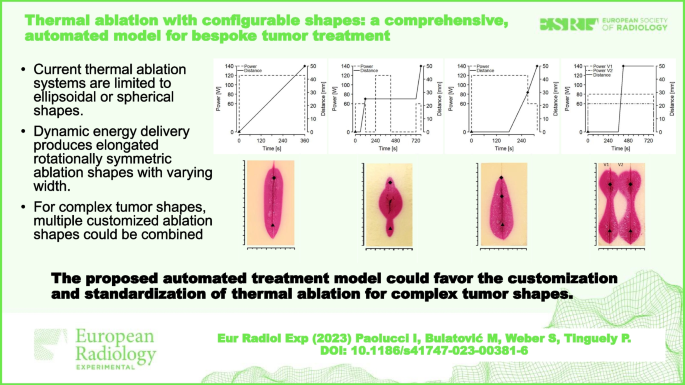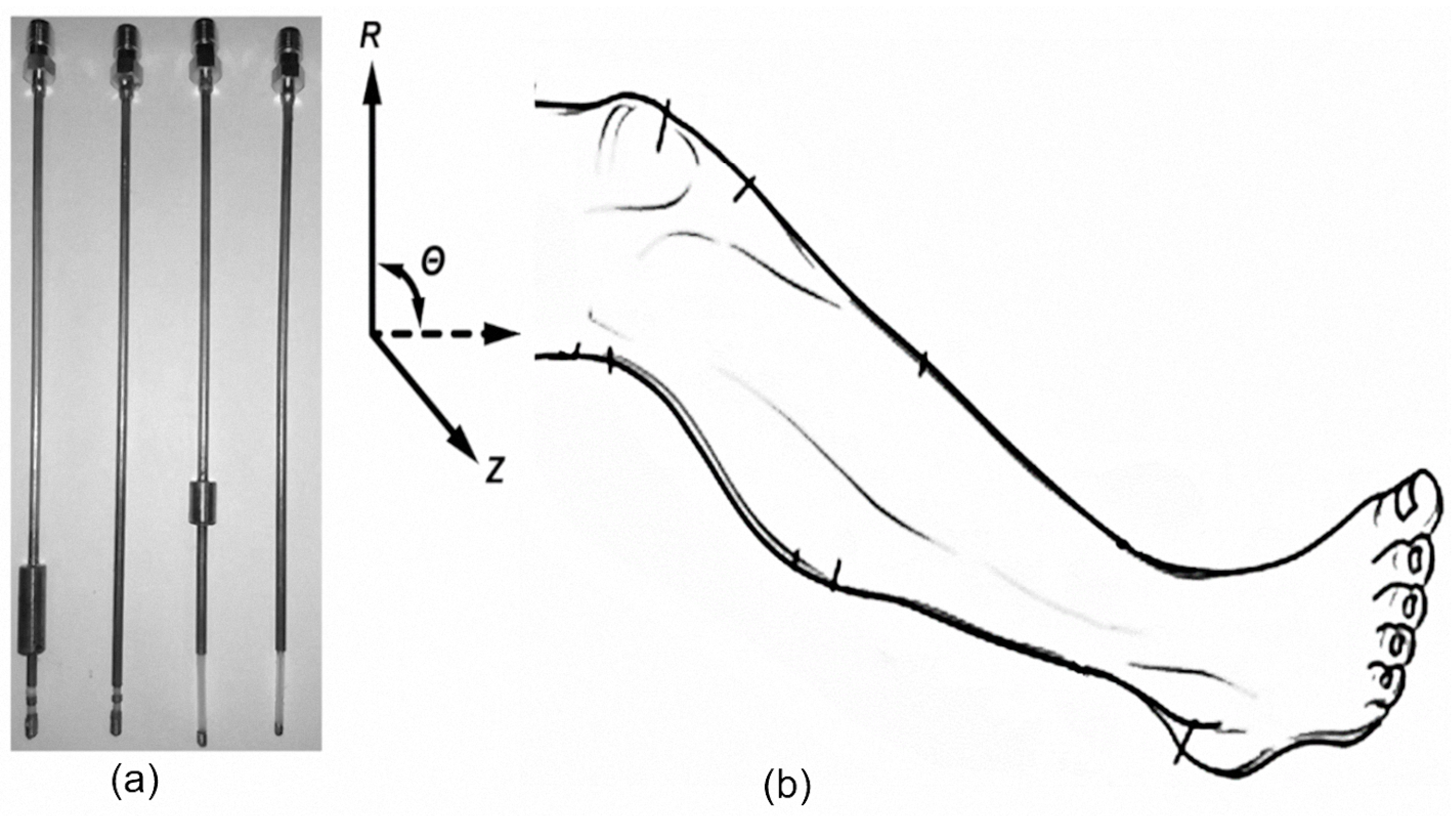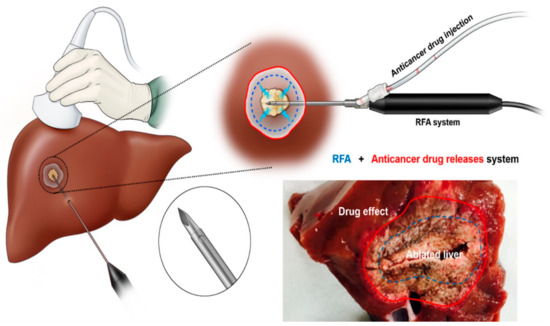Thermal ablation with configurable shapes: a comprehensive
$ 28.50 · 4.8 (290) · In stock

Background Malignant tumors routinely present with irregular shapes and complex configurations. The lack of customization to individual tumor shapes and standardization of procedures limits the success and application of thermal ablation. Methods We introduced an automated treatment model consisting of (i) trajectory and ablation profile planning, (ii) ablation probe insertion, (iii) dynamic energy delivery (including robotically driven control of the energy source power and location over time, according to a treatment plan bespoke to the tumor shape), and (iv) quantitative ablation margin verification. We used a microwave ablation system and a liver phantom (acrylamide polymer with a thermochromic ink) to mimic coagulation and measure the ablation volume. We estimated the ablation width as a function of power and velocity following a probabilistic model. Four representative shapes of liver tumors < 5 cm were selected from two publicly available databases. The ablated specimens were cut along the ablation probe axis and photographed. The shape of the ablated volume was extracted using a color-based segmentation method. Results The uncertainty (standard deviation) of the ablation width increased with increasing power by ± 0.03 mm (95% credible interval [0.02, 0.043]) per watt increase in power and by ± 0.85 mm (95% credible interval [0, 2.5]) per mm/s increase in velocity. Continuous ablation along a straight-line trajectory resulted in elongated rotationally symmetric ablation shapes. Simultaneous regulation of the power and/or translation velocity allowed to modulate the ablation width at specific locations. Conclusions This study offers the proof-of-principle of the dynamic energy delivery system using ablation shapes from clinical cases of malignant liver tumors. Relevance statement The proposed automated treatment model could favor the customization and standardization of thermal ablation for complex tumor shapes. Key points • Current thermal ablation systems are limited to ellipsoidal or spherical shapes. • Dynamic energy delivery produces elongated rotationally symmetric ablation shapes with varying widths. • For complex tumor shapes, multiple customized ablation shapes could be combined. Graphical Abstract

Fast Automatic Liver Tumor Radiofrequency Ablation Planning via Learned Physics Model

Pulsed Field Ablation to Treat Atrial Fibrillation: Autonomic Nervous System Effects - ScienceDirect

3D-CEUS tracking of injectable chemo-sonodynamic therapy-enabled mop-up of residual renal cell carcinoma after thermal ablation - ScienceDirect

Applied Sciences, Free Full-Text

Applied Sciences, Free Full-Text

Calculation of ablation volume irregularity (AVI) of effective ablation

Local Tumor Ablation Using Computer-Assisted Planning and Execution

A mathematical model for preoperative planning of radiofrequency ablation of hepatic tumors

Multipolar Ablation Using Mapping Electrodes: A Novel Approach to Intramural Arrhythmia Substrates - ScienceDirect